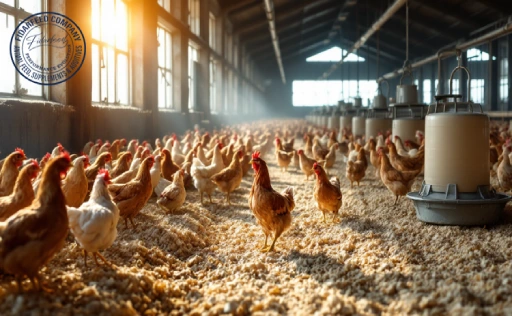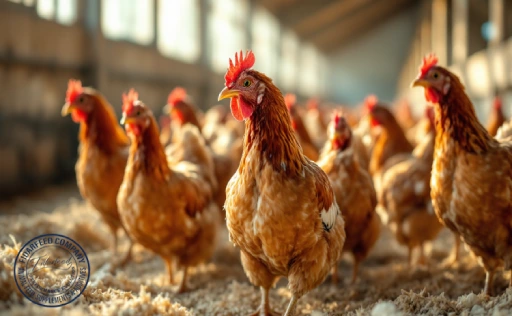
Skin diseases in horses can quickly turn from a minor irritation into a serious health concern, impacting not just the horse’s comfort but also their performance, appearance, and overall wellbeing. Whether you’re a seasoned breeder or just starting out in the horse industry, understanding how to prevent these issues is essential. In this guide, we’ll walk you through everything you need to know to keep your horses’ skin healthy, resilient, and disease-free. Stick with us—your horses will thank you.
Why Preventing Skin Problems in Horses is Crucial
Prevention isn’t just about avoiding an itchy rash; it’s about safeguarding your horse’s overall health. Skin diseases can signal underlying immune problems, nutritional deficiencies, or environmental stressors. Early prevention helps avoid costly veterinary treatments, lost training time, and the emotional toll of watching a horse suffer. Studies have shown that healthy skin acts as the first line of defense against bacterial, fungal, and parasitic invasions (The Horse, 2022). By taking proactive steps, breeders ensure not only healthier horses but also better performance and happier clients.
Common Causes of Equine Skin Issues Every Breeder Should Know
The triggers behind skin diseases in horses are numerous. External parasites like mites, lice, and ticks often top the list. Then there’s fungal infections such as ringworm, bacterial infections like rain rot, and allergic reactions to insect bites or environmental irritants.
Learn more about: Probiotic Supplement for Horses and foals
Poor hygiene, damp bedding, overcrowded stables, and inadequate grooming routines only fuel the fire. Even stress and nutritional imbalances can weaken the horse’s skin defenses, making them more vulnerable. Recognizing these causes early enables breeders to create a healthier environment where skin diseases have little chance to thrive.
Early Warning Signs: How to Detect Skin Problems in Horses Quickly
Early detection is your strongest weapon against worsening conditions. Common early warning signs include:
-
Unusual itching or rubbing
-
Patches of hair loss
-
Scabs, crusts, or raw areas on the skin
Learn more about: Holsteiner Horses: Strength and Stamina for Heavy Work
-
Inflamed, hot, or swollen spots
-
Unpleasant odors coming from the skin
If you notice any of these symptoms, it’s important to act quickly. Mild skin problems can often be treated effectively with simple interventions, but left unchecked, they can escalate into severe infections requiring prolonged treatment. Frequent inspections during grooming sessions are a great way to catch these issues before they become serious.
Daily Care Tips to Prevent Skin Diseases in Horses
An effective daily care routine is your best insurance policy. Start by grooming your horse thoroughly every day using clean brushes. This removes dirt, sweat, and loose hair, which can harbor bacteria and parasites.
Learn more about: The Hidden Stress in Horses: How Human Actions Affect Welfare
Make sure your grooming kit is disinfected regularly to prevent cross-contamination. After exercise or rainy weather, always dry your horse completely, paying special attention to the legs, pasterns, and under the saddle area, where moisture often lingers. Clean wounds or scrapes promptly with an antiseptic solution to prevent infections from setting in.
Additionally, using fly sheets and insect repellents during high-bug seasons helps reduce insect-related skin irritation significantly.
Feeding for Healthy Skin: Nutrition Strategies for Horses
Healthy skin starts from the inside. Horses require a balanced diet rich in essential fatty acids, vitamins (particularly A and E), and minerals like zinc and copper for strong skin integrity.
Omega-3 fatty acids, commonly found in flaxseed and fish oil supplements, can significantly reduce skin inflammation and promote a shiny, resilient coat. According to a 2021 study published in Equine Veterinary Journal, horses receiving optimal levels of zinc and omega-3s showed a 30% reduction in skin issues compared to those on a standard diet.
Learn more about: Nile Fever in Horses: Symptoms and Control Methods
Make sure your feeding program is well-rounded and adapted to your horse’s specific needs, considering age, activity level, and environmental conditions.
Best Stable Management Practices to Reduce Skin Disease Risks
A horse’s environment plays a massive role in their skin health. Keep stables clean, dry, and well-ventilated. Replace soiled bedding daily, and use materials that discourage moisture buildup, such as straw or wood shavings.
Proper drainage around barns and paddocks prevents mud, a major culprit in skin conditions like mud fever (pastern dermatitis). Ensure horses have adequate space to move freely, reducing the risk of physical injuries and stress-related skin flare-ups.
Regularly disinfect stall walls, feeders, and water troughs to minimize the spread of infectious agents.
Seasonal Skin Care: How to Protect Horses Year-Round
Each season brings unique challenges to maintaining healthy skin.
In spring and summer, insects are a major threat. Invest in fly sprays, fly sheets, and regular pasture maintenance to reduce the breeding grounds for biting bugs.
Learn more about: Comprehensive Guide to Feeding Horses: From Young to Adult
During wet autumn months, horses are more susceptible to rain rot and fungal infections. Waterproof rugs and prompt drying after exposure to rain are crucial.
Winter can cause dry, cracked skin, especially around joints. Incorporate moisturizing sprays or grooming oils specifically formulated for horses to maintain skin flexibility.
Adjust your care practices according to the weather to give your horses the best protection year-round.
When to Call the Vet: Getting Professional Help for Skin Diseases in Horses
Despite your best efforts, sometimes skin problems can escalate beyond what home care can manage. If you notice:
-
Rapid worsening of symptoms
-
Large areas of hair loss
-
Persistent swelling or bleeding
-
Behavioral changes such as depression or refusal to eat
Learn more about: Optimal Nutrition for Horses to Prevent Stress and Boost Health
It’s time to call your veterinarian.
A professional can perform skin scrapings, biopsies, or blood tests to diagnose the problem accurately and prescribe targeted treatments such as antibiotics, antifungals, or specialized topical therapies.
Building a strong relationship with a knowledgeable equine vet ensures faster recovery times and helps you stay ahead of future outbreaks.
Conclusion
Preventing skin diseases in horses is not just about having good-looking animals—it’s about ensuring their comfort, happiness, and peak performance. By understanding the causes, spotting early signs, maintaining daily care routines, feeding a balanced diet, and managing their environment carefully, you can give your horses the best chance at a healthy, vibrant life.
Remember, every small step you take adds up to big results for your horses’ well-being.
If you found these tips helpful, or if you have questions or experiences to share, we’d love to hear from you! Drop a comment below or reach out to continue the conversation.







